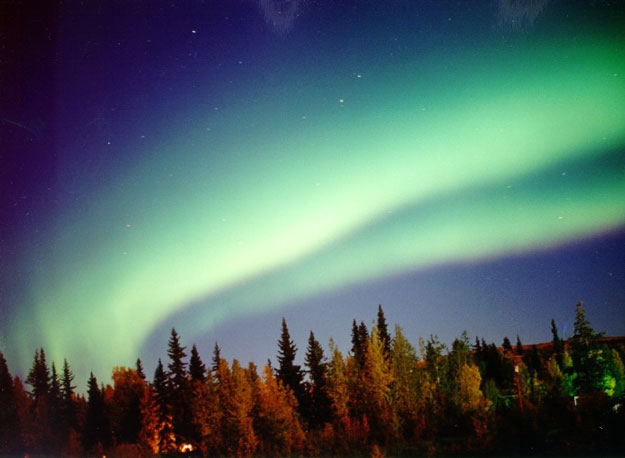
|
Credit & Copyright: Jan Curtis
Explanation:
What causes black aurora?
These gaps in
normal bright aurora are frequently
recorded but rarely questioned.
Recent research using data from four
Cluster spacecraft orbiting the Earth
has now likely found the secret: black auroras are actually anti-auroras.
In normal auroras,
electrons and/or predominantly negatively charged
particles fall toward Earth along surfaces of constant
magnetic field.
They ionize the
Earth's atmosphere on impact, causing the bright glows.
In black anti-auroras, however,
negatively charged particles are sucked out
from the Earth's
ionosphere along adjoining
magnetic field lines.
These
dark anti-auroras can climb to over 20,000 kilometers
and last for several minutes.
Pictured above, a black aurora is seen dividing
bright auroras over Fairbanks,
Alaska,
USA.
|
January February March April May June July August September October November December |
| ||||||||||||||||||||||||||||||||||||||||||||||||
NASA Web Site Statements, Warnings, and Disclaimers
NASA Official: Jay Norris. Specific rights apply.
A service of: LHEA at NASA / GSFC
& Michigan Tech. U.
Based on Astronomy Picture
Of the Day
Publications with keywords: aurora - black aurora
Publications with words: aurora - black aurora
See also:
